-
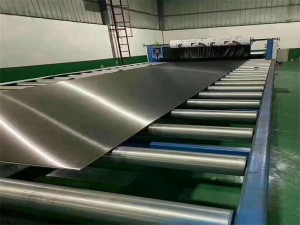
OEM/ODM Manufacturer GB Stock Pux Meet Export Requirements Cold Rolled 201stainless Steel
Product introduction
Mainly used for decorative pipe, industrial pipe, some shallow tensile products.201 stainless steel plate has the ability to resist general corrosion similar to the unstable nichcr 304. Prolonged heating of 201 stainless steel plates in the chrome-carbide degree temperature range may affect alloy 321 stainless steel plates and 347 in harsh corrosive media. 201 Stainless steel plates are mainly used for high temperature applications, which require the material to have strong sensitization resistance to prevent intergranular corrosion at lower temperatures.
Chemical composition
Chemicai composition(WT%)
(C) Carbon :≤0.15
(Si) Silicon :≤0.75
(Mn) Manganese :5.5 ~ 7.50
(Cr) Chromium :16.0 to 18.0
(N) Nitrogen :≤0.25
(Ni) nickel :3.50 ~ 5.50
(P) Phosphorus :≤0.060
(S) Sulfur :≤0.030
Physical property
Tensile strength :100,000 to 180,000 psi
Yield strength :50,000 to 150,000 psi
Density :.280lbs/cubic inch(density 7.93g/cm3)
Usage
Used in chemical, coal and petroleum industries with high corrosion resistance to grain boundaries, outdoor machines, heat-resistant parts of building materials and parts with difficulty in heat treatment;
1. Oil exhaust gas combustion pipeline;
2. Engine exhaust pipe;
3. Boiler shell, heat exchanger, heating furnace components;
4. Diesel engine muffler components;
5. Boiler pressure vessel;
6. Chemical transport truck;
7. Expansion joint;
8. Spiral welded pipe for furnace pipe and dryer
-
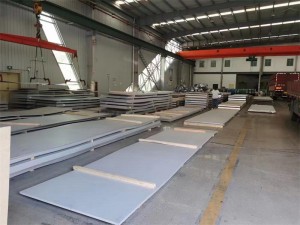
New Fashion Design for 201 202 301 302 303 304 304L 304n1 309S 310S 316 316L 316ti 316n Single Side Mirror Stainless Steel Sheet Plate
316L stainless steel plate
316L is a stainless steel material grade, AISI 316L is the corresponding American grade, sus 316L is the corresponding Japanese grade. Our unified digital code is S31603, the standard brand is 022Cr17Ni12Mo2 (the new brand), and the old brand is 00Cr17Ni14Mo2, which means it mainly contains Cr, Ni and Mo, and the number indicates the approximate percentage. The national standard is GB/T 20878-2007 (current version).
Chemical composition
Carbon C: ≤0.030
Silicon Si: ≤1.00
Manganese Mn: ≤2.00
Sulfur S: ≤0.030
P: ≤0.045
Cr: 16.00 ~ 18.00
Nickel Ni: 10.00 ~ 14.00
Molybdenum Mo: 2.00 ~ 3.00
Corrosion resistance
316L is widely used in the chemical industry because of its excellent corrosion resistance. 316L is also a derivative steel of 18-8 austenitic stainless steel, with 2 ~ 3% Mo element added. On the basis of 316L, many kinds of steel are also derived, such as 316Ti after adding a small amount of Ti, 316N after adding a small amount of N, and 317L after increasing the content of Ni and Mo.
Most of the existing 316L on the market are produced according to the American standard. For cost consideration, steel mills generally put the Ni content of products as close to the lower limit as possible. American standards stipulate that 316L contains 10 to 14% Ni, while Japanese standards stipulate that 316L contains 12 to 15% Ni. According to the minimum standard, there is a 2% difference between the American standard and the Japanese standard in the Ni content, which is reflected in the price is quite huge, so customers need to see clearly when they buy 316L products, the products refer to ASTM or JIS standard.
The Mo content of 316L makes the steel have excellent corrosion resistance, and can be safely used in the environment containing halogen ions such as Cl-. Because 316L is mainly used for its chemical properties, steel mills have slightly lower surface inspection requirements for 316L (relative to 304), and customers with higher surface requirements should strengthen surface inspection.
Mechanical property
Tensile strength σb (MPa) : ≥480
Conditional yield strength σ0.2 (MPa) : ≥177
Elongation δ5 (%) : ≥40
Reduction rate of cross-section (%) : ≥60
Hardness: ≤187HB; 90 HRB or less; 200 hv or less
Density: 7.98g/cm3;
Specific heat capacity ratio (20℃) : 0.502J/(g*K)
-

Chinese wholesale Manufacturer Hot Dipped Galvanized Steel Pipe BS1387
Seamless steel pipe is a kind of round, square and rectangular steel with hollow section and no joints around Seamless steel pipe is made of steel ingot or solid tube blank through perforation, and then hot rolled, cold rolled or cold drawn Seamless steel pipe has a central control section and is widely used as a pipeline for conveying fluid. Compared with solid steel such as round steel, the steel pipe has the same bending and torsional strength and is lighter. It is an economic section steel. It is widely used in the manufacture of structural parts and mechanical parts, such as oil drill pipe, automobile transmission shaft, bicycle frame and steel pipe used in construction
-

Chinese wholesale Manufacturer Hot Dipped Galvanized Steel Pipe BS1387
Seamless steel pipe is a kind of round, square and rectangular steel with hollow section and no joints around Seamless steel pipe is made of steel ingot or solid tube blank through perforation, and then hot rolled, cold rolled or cold drawn Seamless steel pipe has a central control section and is widely used as a pipeline for conveying fluid. Compared with solid steel such as round steel, the steel pipe has the same bending and torsional strength and is lighter. It is an economic section steel. It is widely used in the manufacture of structural parts and mechanical parts, such as oil drill pipe, automobile transmission shaft, bicycle frame and steel pipe used in construction
-

Factory For AISI SUS 201 304 316L 310S 409L 420 Hot/Cold Rolled/Stainless/PPGI, PPGL, Gi/Color Coated/Tinplate/Galvanized/Carbon/Zinc Coated/Galvalume/Steel Coil
Innovation, excellent and reliability are the core values of our company. These principles today much more than ever form the basis of our success as an internationally active mid-size business for Online Exporter China 304 316 En/DIN 1.4401 Hot Rolled Stainless Steel Coil Duplex 904L 2205 2507, Honesty is our principle, professional operation is our work, service is our goal, and customers’ satisfaction is our future!
-

Fast delivery ASTM Round/Square Ss 201 304 316 310S 309S 409 904 430 6061 Brushed/Mirror Polished Seamless/Welded Stainless Steel/Aluminum/Carbon/Galvanized Tube Pipe Price
Galvanized pipe, also known as galvanized steel pipe, is divided into hot-dip galvanizing and electro galvanizing. The hot-dip galvanizing layer is thick and has the advantages of uniform coating, strong adhesion and long service life. The cost of electro galvanizing is low, the surface is not very smooth, and its corrosion resistance is much worse than that of hot-dip galvanized pipe.
-
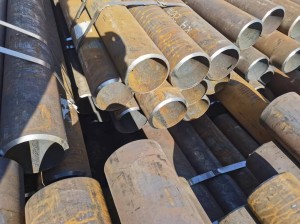
Factory best selling Hot Selling ASTM A53 A106 API 5L Q235 Seamless/ ERW Welded / Alloy Galvanized Square/Rectangular/Round Carbon Steel Pipe/Stainless Steel Pipe
Seamless steel pipe is a kind of round, square and rectangular steel with hollow section and no joints around Seamless steel pipe is made of steel ingot or solid tube blank through perforation, and then hot rolled, cold rolled or cold drawn Seamless steel pipe has a central control section and is widely used as a pipeline for conveying fluid. Compared with solid steel such as round steel, the steel pipe has the same bending and torsional strength and is lighter. It is an economic section steel. It is widely used in the manufacture of structural parts and mechanical parts, such as oil drill pipe, automobile transmission shaft, bicycle frame and steel pipe used in construction
-

Factory best selling Hot Selling ASTM A53 A106 API 5L Q235 Seamless/ ERW Welded / Alloy Galvanized Square/Rectangular/Round Carbon Steel Pipe/Stainless Steel Pipe
Seamless steel pipe is a kind of round, square and rectangular steel with hollow section and no joints around Seamless steel pipe is made of steel ingot or solid tube blank through perforation, and then hot rolled, cold rolled or cold drawn Seamless steel pipe has a central control section and is widely used as a pipeline for conveying fluid. Compared with solid steel such as round steel, the steel pipe has the same bending and torsional strength and is lighter. It is an economic section steel. It is widely used in the manufacture of structural parts and mechanical parts, such as oil drill pipe, automobile transmission shaft, bicycle frame and steel pipe used in construction
-
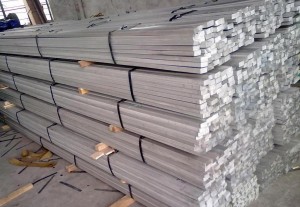
18 Years Factory Alkali
Square steel: solid, bar. It is different from square tube, hollow and belongs to pipe. Steel: it is a material with various shapes, sizes and properties required by ingot, billet or steel through pressure processing. Steel is an essential material for national construction and the realization of the four modernizations. It is widely used and has a wide variety. According to the different section shapes, steel is generally divided into four categories: profile, plate, pipe and metal products. In order to facilitate the organization of steel production, order supply and business management, it is also divided into heavy rail, light rail, large section steel, medium section steel, small section steel Steel cold-formed section steel, high-quality section steel, wire rod, medium and thick steel plate, sheet steel, electrical silicon steel sheet, strip steel, seamless steel pipe, welded steel pipe, metal products, etc.
-

OEM/ODM Factory China Wholesale Steel C Channel, Hot Galvanized Steel C Purlin Price
Channel steel channel steel is a long strip steel with groove shaped section, which belongs to carbon structural steel for construction and machinery. It is a section steel with complex section, and its section shape is groove shape. Channel steel is mainly used for building structure, curtain wall engineering, mechanical equipment and vehicle manufacturing.
-

Bottom price ASTM Ss 201 304 304L 316 316L 310S 309S 430 904L 2205 Welded Round/Square/Rectangular/Hex/Oval Tube or Carbon/Aluminum/Galvanized/Seamless/Stainless Steel Pipe
Standard: JIS AISI ASTM GB DIN EN BS
Grade: 201, 202, 301, 302, 303, 304, 304L, 310S, 316, 316L, 321, 410, 410S, 420,430, 904L, etc
Technique: Spiral welded, ERW, EFW, Seamless, Bright annealing, etc
Tolerance: ± 0.01%
Processing service: bending, welding, decoiling, punching, cutting
Section shape: round, rectangular, square, hex,oval, etc
Surface finish: 2B 2D BA No.3 No.1 HL No.4 8K
Price term: FOB,CIF,CFR,CNF,EXW
Payment term: T/T, L/C
-
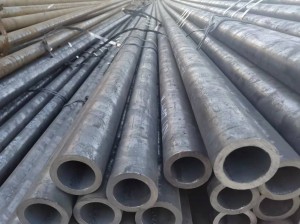
Manufacturing Companies for Factory Price Metal Seamless Tube Straight Pipe /Copper Pipe Od 1/2″ 3/4″ Copper Round Tubes /Copper Pipe 15mm for Water Tube Price
Seamless steel pipe is a kind of round, square and rectangular steel with hollow section and no joints around Seamless steel pipe is made of steel ingot or solid tube blank through perforation, and then hot rolled, cold rolled or cold drawn Seamless steel pipe has a central control section and is widely used as a pipeline for conveying fluid. Compared with solid steel such as round steel, the steel pipe has the same bending and torsional strength and is lighter. It is an economic section steel. It is widely used in the manufacture of structural parts and mechanical parts, such as oil drill pipe, automobile transmission shaft, bicycle frame and steel pipe used in construction